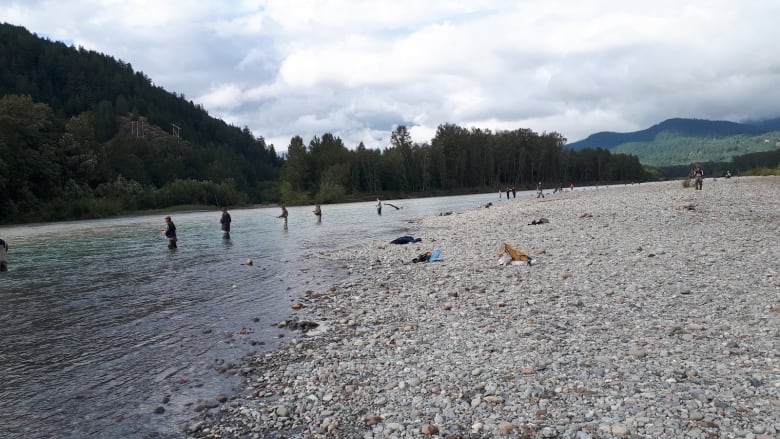Squamish River pink salmon fishery should be closed, say local conservationists
Fish populations are in decline, but federal officials aren't tracking it, say critics

A mid-August decision to limit pink salmon fishing to catch-and-release only on the Squamish River should have happened much earlier, say local environmentalists.
"We're watching the extinction of Pacific salmon, but our regulating bodies aren't doing the assessments or collecting the data needed to prove it," said Francesca Knight, president of the Squamish River Watershed Society.
"Our pink fisheries have been struggling since 2015, and as predicted, this year's run has been a disaster."
Knight, along with other Squamish-based conservationists, biologists, and fishermen, say officials from Fisheries and Oceans Canada (DFO) are making "risky" fish management decisions without assessing local salmon populations. And local businesses and ecosystems are paying the price.
'We can't be there to assess every stream in the province'
Under DFO's current system, management decisions in the Squamish River and its tributaries are influenced by "limited" spawning counts, and input from the Squamish-Lillooet Sport Fish Advisory Board, said Brian Allan, a resource management coordinator at DFO.
"You need a lot of information to measure a fish stock, and we don't have the resources necessary. We do our best to work with people on the ground and listen to their recommendations, but we can't be there to assess every stream in the province," he added.

Common fish management practices measure the number of adults that return to spawn and the number of juvenile fish entering the ocean. These figures are used to estimate expected spawning returns. However, these measurements is not being done on the Squamish River.
Knight says fishery officials have no basis for managing local fish stocks without this level of assessment.
When the Squamish River Watershed Society began requesting the closure of the fishery before its July 15 opening date, members were concerned about the alarming pre-season indicators.
Pink salmon have historically returned to Squamish watersheds to spawn by the millions in odd-numbered years, juveniles hit the ocean in even-numbered years and then return the next, completing the life cycle.

Knight says that flooding in 2017, which disrupted egg development, contributed to this year's low returns of pink salmon. A BC Hydro study also monitored a low number of juvenile pink salmon leaving the watershed in 2018, hinting at low returns for 2019.
Not your average small B.C. watershed
Clint Goyette, owner of a local fishing guide company, has witnessed massive increases in fishermen travelling to Squamish from across the Lower Mainland since 2008 as frequent fishery closures began to be imposed on the Fraser River.
"Opening any salmon fishery, for any amount of time, in the Lower Mainland comes with serious implications," he said. "Low returns met by high volumes of anglers can impact the stock, and all other species that feed on salmon, such as trout.
"These pressures have negatively affected my guiding business, as both salmon and trout, aren't as abundant or as large," he added.
Trout, along with birds and even other species of salmon, benefit from abundant returns of pink because their eggs, fry, and carcasses increase food supply in waterways.
Additionally, a threatened population of 59 grizzly bears in the Squamish-Lillooet area will be further weakened by declining returns in salmon, says Steve Rochetta, a biologist with the Ministry of Forest, Lands and Natural Resource.
"Pink salmon are very important to the ecosystem and a wide variety of species within it. The time for guessing about fish numbers has long passed, there must be targets and assessment of these runs before utilization," Rochetta said.